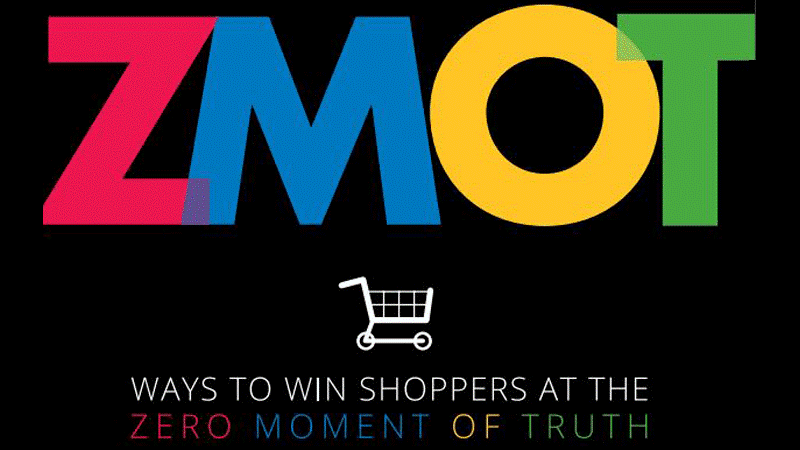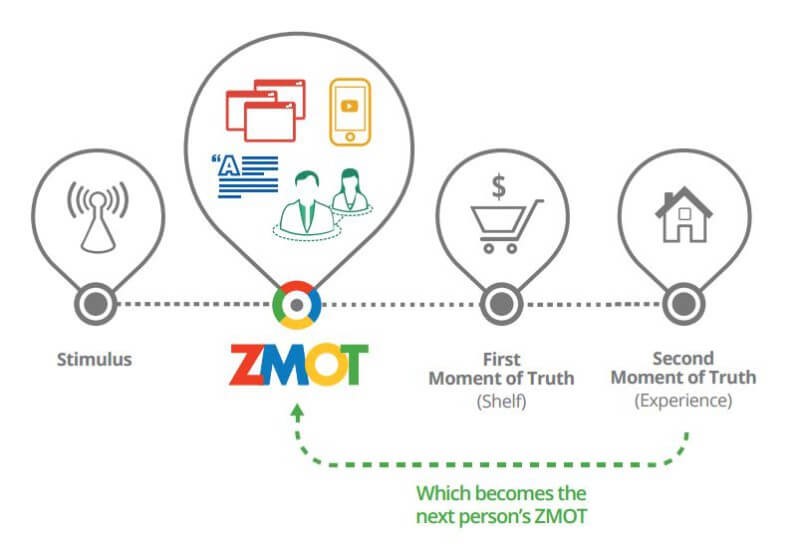
Up until around twenty years ago most of the advertising that we were exposed to was limited to print, radio, TV, and some PR. If you had a good client base, peer-to-peer advertising (word of mouth) was also very effective as still is.
Today, the marketing and advertising spectrum has completely changed. Remember when the Internet used to be nicknamed the “Information Superhighway”? That’s right. Forget advertising messages. Thanks to the Internet, we can all access any type of information about the products or services that we want in a matter of seconds. Now, we can decide through a variety of “search moments” whether the product we want to purchase is good or not regardless of what their advertising material is telling us.
For marketing professionals, each of these search moments becomes an opportunity to educate and convince the customers about the value of the product they’re about to purchase.
In this article, I take a look at these crucial moments of truth and how we as marketers can capitalize on them. In particular, I look at one of the newer additions to this thinking — what Google is calling the Zero Moment of Truth (ZMOT) — and how our always-on internet connections and mobile devices are driving purchase decisions as never before.
What Are Moments of Truth
The term “Moments of truth” was originally coined in 1981 by Jan Carlzon, the CEO of Scandinavian Airlines, a new concept that would completely alter the then prevailing customer service philosophy.
“Moments of Truth are those interactions where customers put in a high amount of energy to reach a satisfactory outcome. A company could have thousands of moments of truth in a single day. Whether adversely or favorably, they incredibly affect companies’ relationship with customers and their perception about the brand. Some of the examples for it can be flight delay, a damaged product or even an advice to the customer. If companies give customers’ emotive needs precedence over their hard-set agendas, customer loyalty is the consequential emotional behavior that these moments of truth would result in. And once customers are emotionally connected and rationally satisfied, that is when profitability would also come in.”
Today, almost forty years later, a lot has changed but the concept of Moments of Truth remains. The difference is that today, the typical customer goes through multiple touch points and many more moments of truth. Think about the number of interactions through smartphones, social media, digital marketing ads, search engines, public reviews, email campaigns, chat bots, podcast and audio apps, just to name a few. and dealing with the emotional needs of the customer is more important than ever over multiple touch points.
We’ve also decreased our attention span, our patience waiting to get the information we want is at an all time low and instant gratification has become the norm. Businesses and marketing professionals need to keep up with this constant demand and ‘be there’ to provide customers with the information they need.
First Moments of Truth
The First Moment of Truth (FMOT) is described as the moment when a prospective customer comes in touch with a product for the first time. This micro-moment could be physical (at a retail store) or digital (via digital promotion). You can think of it as the first-impression moment when your brand has the unique chance to convert the casual browser into a buyer. The goal is to establish an emotional connection between the person and the product that results in an impulse purchase, also referred to as non-planned purchases. We’ve all experienced these moments, so no need to explain further.
In our online marketing world, the FMOT typically happens under a variety of situations:
- An email marketing campaign with an exclusive offer
- A programmatic banner being served while browsing a random website
- A social media shared experience or review of a particular product or service by one of our friends or followers
- An Instagram post exposing the viewer to a new restaurant nearby
Second Moment of Truth
The second moment of truth is when consumers are already using the product purchased during the FMOT. If your FMOT resulted in the desired impulse purchase, it is during the second moment of truth that companies need to make sure that their products deliver as promised. If your customer doesn’t feel like your marketing promises are not fulfilled by their own personal experience, your chances of converting her into a repeat customer will end right there and your second moment of truth is were your marketing trip will end.
Third Moment of Truth
The third moment of truth is when our satisfied customer becomes your biggest fan and an influencer for your brand. Ideally, after successfully experiencing the first and second moments of truth, at this stage she will share her experience and recommend your product to other people. This could be done via positive reviews, social shares, person to person, and several other ways.
A happy customer becomes a (brand) loyal customer and with that, she will also turn into a great advocate for your brand.
The Zero Moment of Truth
Enter the Zero Moment of Truth (ZMOT). This is a new concept that Google introduced in 2011 in a new study describing how the consumer journey has changed, specifically since the growth of smartphone usage. According to the study:
- 50 percent of shoppers used a search engine to research a product or brand.
- 38 percent comparison shopped online (reviews, prices and so on).
- 36 percent checked out the brand/manufacturer’s website.
- 31 percent read online endorsements, reviews or recommendations.
Google defines The Zero Moment of Truth as the new moment that stands between a stimulus (ad) and the FMOT. For example, a consumer sees an ad (digital or print) displaying a new performance part for his car. While in the pre-digital age he may just call the company from directly from the ad, today the same consumer would use his smartphone to search the product online, compare prices, customers reviews, YouTube videos, ask his friends on Facebook, forums, etc., and all of this is done at the Zero Moment of Truth.
In the majority of situations, ZMOT takes place on search engines and social networks. A compilation of micro-moments before the customer comes in direct contact with the product, resulting in a much more educated purchasing decision
Google’s study (and keeping in mind that it was compiled in 2011) already shows that 79 percent of consumers use a smartphone to research their shopping, and 83 percent of mothers claim to do online research after seeing a TV ad.
The graphic below shows where the ZMOT stands in Google’s newly proposed model:

All of these micro-moments that take place during the Zero Moment of Truth are the best opportunity for you to position your brand in front of your prospective customers.
In a future article, I will explain how ZMOT and subsequent moments of truth apply to today’s organic and digital marketing strategies.
Thank you for reading. Until next time, this is Manuel Gil del Real (MGR)




